The ballad of the tank M3 "Lee / Grant." History of creation (part two)
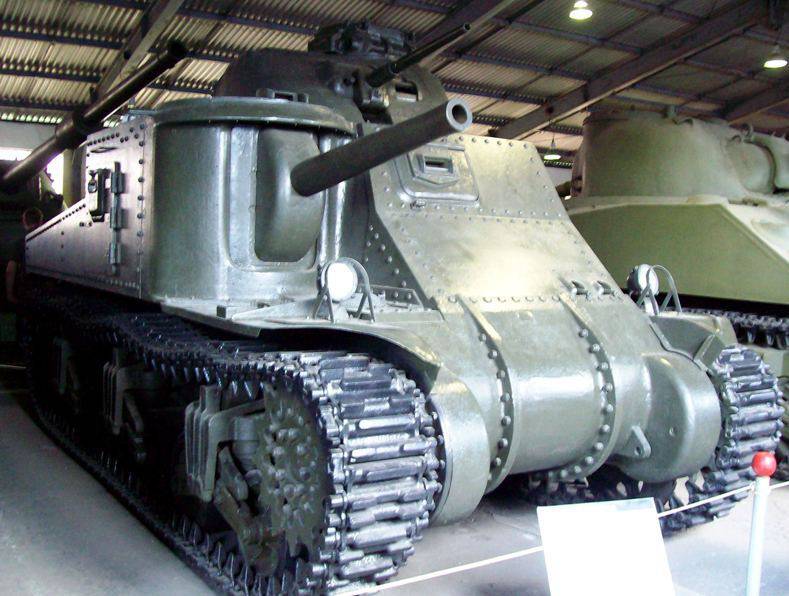
М3 in the museum in Kubinka.
As for the construction of the new Chrysler tank factory, they were launched on September 9 on the outskirts of Detroit - called Warren Townshire on approximately 1940 thousand acres. By January 77, the preparatory work had been completed, and the Chrysler engineers, together with the specialists of the American Locomotive company and Baldvin enterprises, had completed all the technological processes. Well, the first prototypes have already started testing 1941 April 11. On May 1941, the first M3 tank went to the Aberdeen Proving Ground, and the second was saved to show the selection committee as a standard sample. Serial production of tanks "General Lee" began on July 3 8, that is, at the height of the fighting on the Eastern Front. And since March 1941 of the same year in the United States adopted the law on lend-lease, this removed all restrictions on the supply of these tanks in Great Britain, and then in the USSR, all newly released tanks immediately went overseas. Of course, all the firms involved in the production of armored vehicles immediately began to increase its production. Actively involved in this business of the company "Pullman-Standart Car Company" , "Pressed Stell" and "Lima Lokomotive". Moreover, it should be noted that while the M8 was produced, and it was produced only a little more than a year, and if it is exact, from July 3 8 of the year to August 1941 of 3. Concern "Chrysler" for this period produced 1942 tank М3352 of various modifications, "American Locomotive company" - released 3 units., "Baldvin" more - 685 units., "Pressed Stell" - total 1220 tank., "Pullman - Standart Car Company "- already 501, and all this together resulted in 500 machines of various modifications. Moreover, the Canadians helped: their company" Monreal Lokomotive company "also mastered the production of these machines and manufactured 6258 tanks M1157 already for the Canadian army. However, in August 3 of the year These enterprises quickly switched to the production of the M1942 "Sherman" tank. Although ... there was an exception. Baldvin continued the production of the M4А3 and М3А3 until December of the year 5.
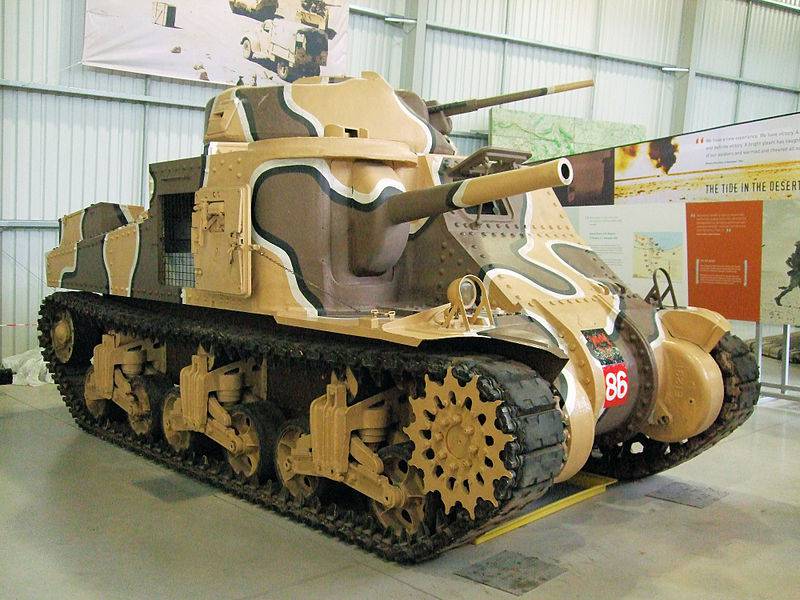
British M3 "General Grant" in the museum in Bovington. Pay attention to his whimsical coloring.
Note that the M3 tanks of absolutely all modifications looked so original that it is almost impossible to confuse them with any other tank in the world.
Field Marshal Bernard Montgomery’s M3 Tank from the Imperial War Museum in London.
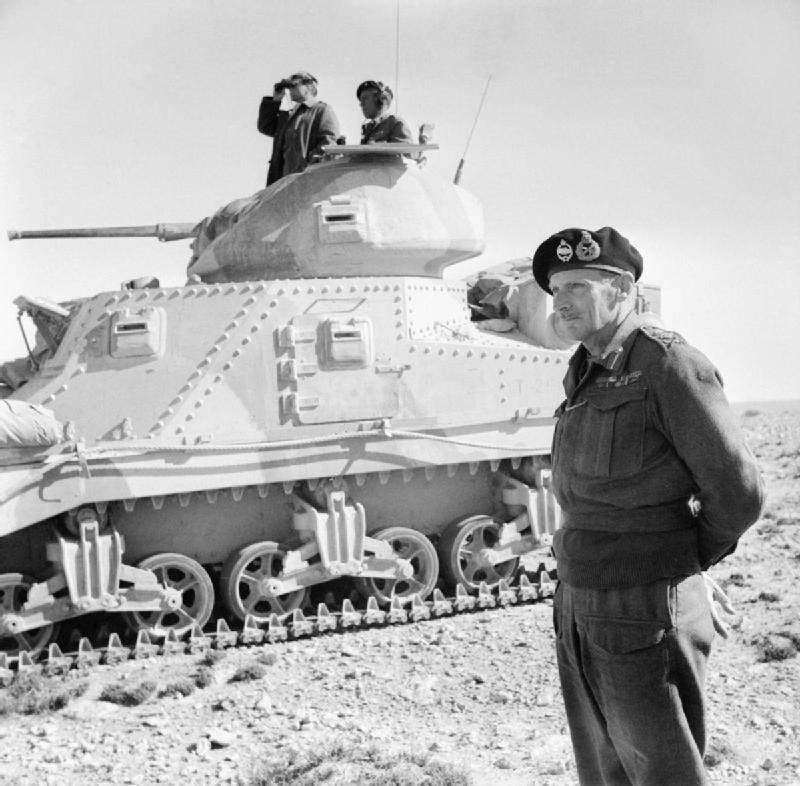
"Monty" near his tank. North Africa 1942 year.
As already noted, the location of the gun in the airborne sponsorship brought this tank closer to the machines of the First World War, albeit at a different technical level. The engine was in the back, but the transmission was in front, because of which the engine had to be connected to the transmission with a long drive shaft. Here, where this shaft passed, the engine control rods also passed and it was all covered with a light removable casing. All parts of the transmission were mounted in the cast part of the armored body, which consisted of three parts, interconnected by bolting through flanges. As a result, the tank had a very peculiar nasal tip. All this was also bolted to the tank hull, and this technological solution was applied on all modifications, and then on the earliest M4 "Sherman" tanks. The body was going from flat armor plates. At the same time, their thickness was also unchanged on all modifications and was equal to 51 mm in frontal projections, the thickness of the side and stern sheets was 38 mm, and 12,7 mm it was the thickness of the hull roof armor. At the bottom of the tank, the thickness of the armor was variable: from 12,7 mm around the engine to 25,4 mm under the fighting compartment. The wall thickness is 57 mm and the roof is 22 mm. The angle of the front armor plate was 60 degrees to the horizon, but the side and rear plates were also arranged vertically. Fastening of a plate differed on different modifications. On modifications М3, МЗА4, МЗА5 fastening was carried out on rivets. On modifications MZA2 and MZAZ welding was used. to the inner frame. On the tank MZA1 the upper part of the hull was cast. The hull of this machine had very favorable outlines and literally “flowed around” the crew and mechanisms, but only made three hundred of them due to difficulties with the technology of casting and hardening such large “baths”. "Rivet" body of flat sheets, as well as welding them turned out to be easier and cheaper. However, the technology was tested and in the future very useful.
"The crew of combat vehicles"
On the right side of the hull was installed solid cast sponson with 75-mm gun, installed so that the dimensions of the hull, he did not act. It is the height of the sponson, as well as the dimensions of the engine, together determined the height of the tank hull. The cast turret with the 37-mm gun was shifted to the left, and above it was a small turret, in which there was a machine gun. The result was a kind of pyramid height 3214 mm. The length of the tank was equal to 5639 mm, width - 2718 mm, clearance was 435mm. Obviously, the height of the car came out excessive. But the fighting compartment came out very spacious, and, by the way, is still recognized as one of the most comfortable. Moreover, the tank hull inside was also lined with a layer of spongy rubber, which protected the crew from small fragments that were peeling from the armor. To enter the tank on the sides served two doors, a hatch on the body above and another on the roof of the machine-gun turret. This allowed the crew to quickly get into the tank, and conveniently evacuate the wounded through these side doors, although they reduced the hull strength in some way.
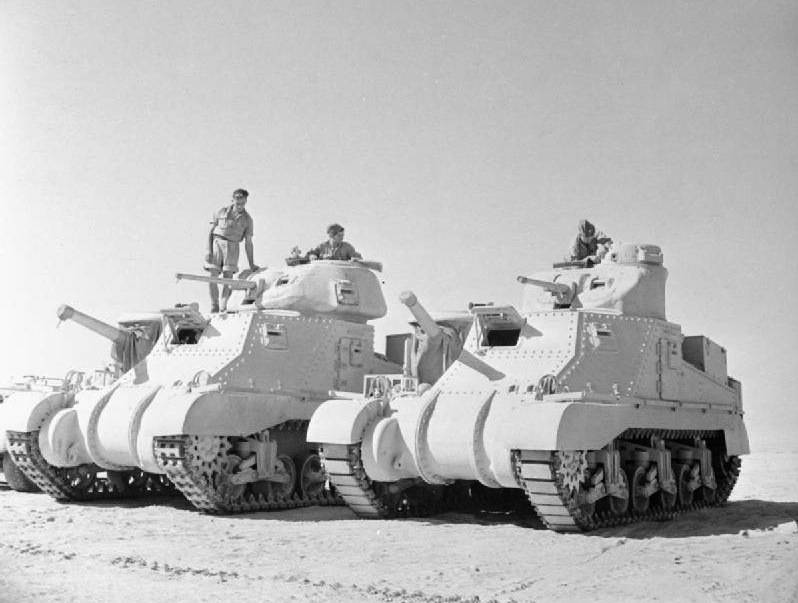
English M3 at El Alamein, Egypt, July 7 1942
Each crew member had inspection slots and another embrasure for firing from a personal weapons (what the US Army paid much attention to!), protected by armor caps. On the rear body plate for access to the engine there was a large double door, and the joint of its wings was closed with a narrow strip fixed on the bolts. On either side of it were two filters - an air cleaner, both round and box-shaped. Air intakes were traditionally located on the upper supermotor armor sheet and covered with nets. And here, again, there was a double-wing large hatch for dismantling the engine (on models МХNUMXА3 and М3А3). The similar arrangement of hatches facilitated engine maintenance. On versions М5, М3А3 and М2А3, instead of the hatch there were removable sheets of armor: two for the first two tanks and as many as five for the last. Here (on the side bevels of the aft part of the hull) both the entrenching tools, and the infantry helmets, and boxes with rations could be mounted. In short, this part of the tank was used as a “cargo compartment”.
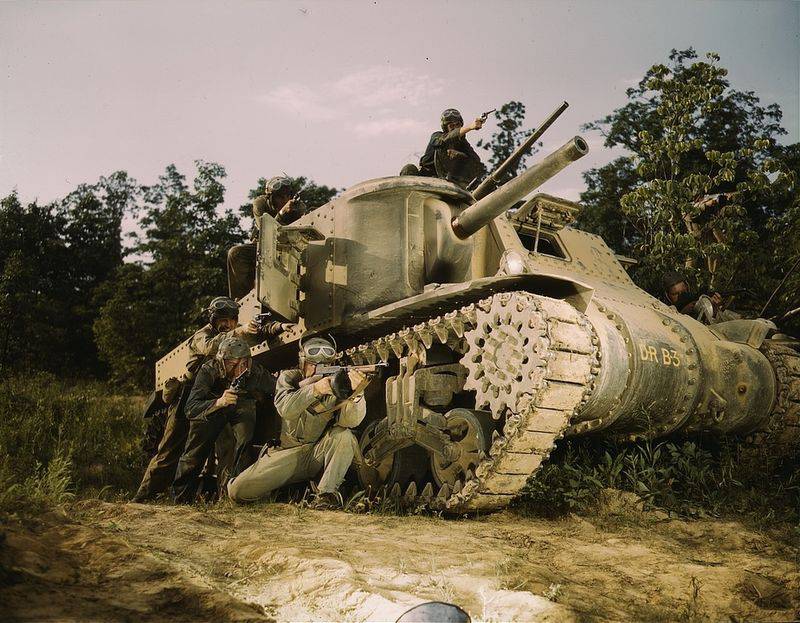
Training crews M3 in Fort Knox, Kentucky.
Ibid. Full speed on sandy ground.
It should be noted that the tanks M3, M3А1, М3А2 did not have forced ventilation, for which the crew had to open the upper hatches. Lack quickly taken into account and models M3A3, M3A4, M3A5 was established just three exhaust fans under armored caps, one to the left of the driver, just above the Spark machine-gun, the second for the door body, with the breech 75-mm guns and the last of the breech 37-mm guns on the roof of a small tower. Therefore, the powder gases from the tank quickly sucked and did not disturb the crew.
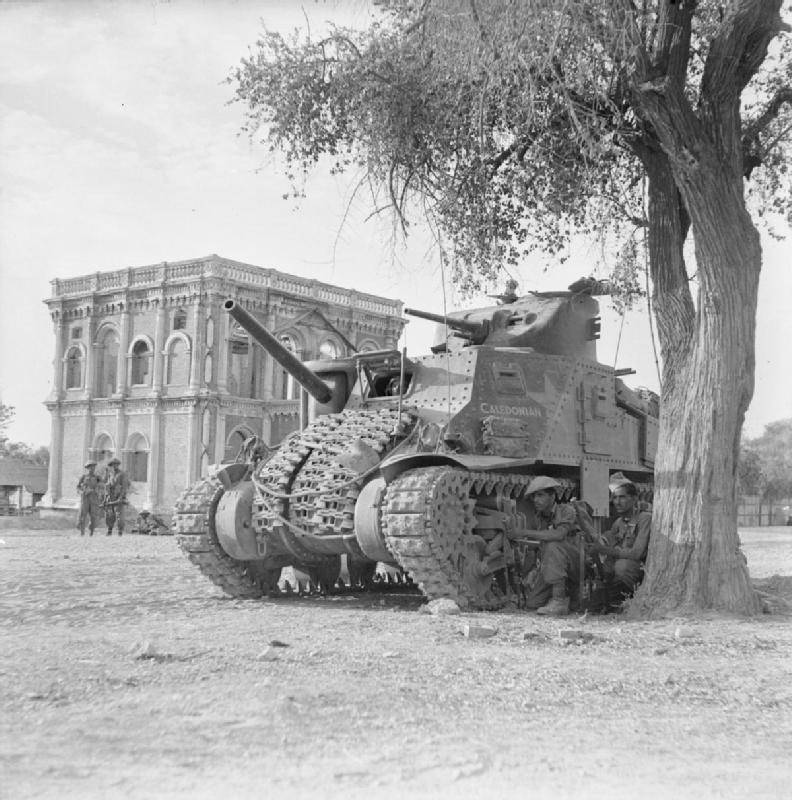
Infantry 19 of the Indian division in Mandalay Street in Burma, 9-10 in March 1945. Pay attention to the gun with a long barrel. Not all of them managed to cut. Part of it got into the war "uncircumcised" and these weapons proved to be very good!
The M3 tanks, both General Lee and General Grant, were usually star-shaped aviation nine-cylinder carburetor engine "Wright Continental" R 975 EC2 or Cl modification whose power was 340 hp He made it possible for this 27-ton tank to reach speeds of up to 42 km / h, and with a fuel reserve of 796 liters, have a range of 192 km. The traditional drawback of such engines is their fire hazard, since they require high-octane gasoline to operate. In addition, they are difficult to maintain, especially those cylinders that are from the bottom. But in 1941 there was practically nothing to choose from, so I had to come to terms with all these shortcomings. Starting in March 1942, a company such as Baldvin began to mount General Motors 3-2 3 automotive diesel engines with water cooling and a total power of 3 hp on the M6A71 and M6046A375. From this, the weight of the tank increased by 1,3 tons, but on the other hand increased power, efficiency, speed and range. These tanks received the MZAZ and MZA5 indices. Then, in June 1942, Chrysler delivered a new 3-cylinder water-cooled Chrysler A 4 engine to the M30A57 tank. The length of the hull, the length of the tracks, and also the weight of two tons increased. The speed and power reserve have not changed. The British in their cars often replaced American engines with their Guiberson radial diesel engines. But the case was not subjected to alterations.
The gun in the sponson. Pukkapunual Museum in Australia.
Although the tanks were delivered to England, the driver’s position did not change. In front of it were the following instruments: a tachometer, a speedometer, a voltmeter, an ammeter, of course, a fuel gauge, a thermometer, and. of course, the clock. The tank could be controlled with a gear lever, handbrake, brake and accelerator pedals.
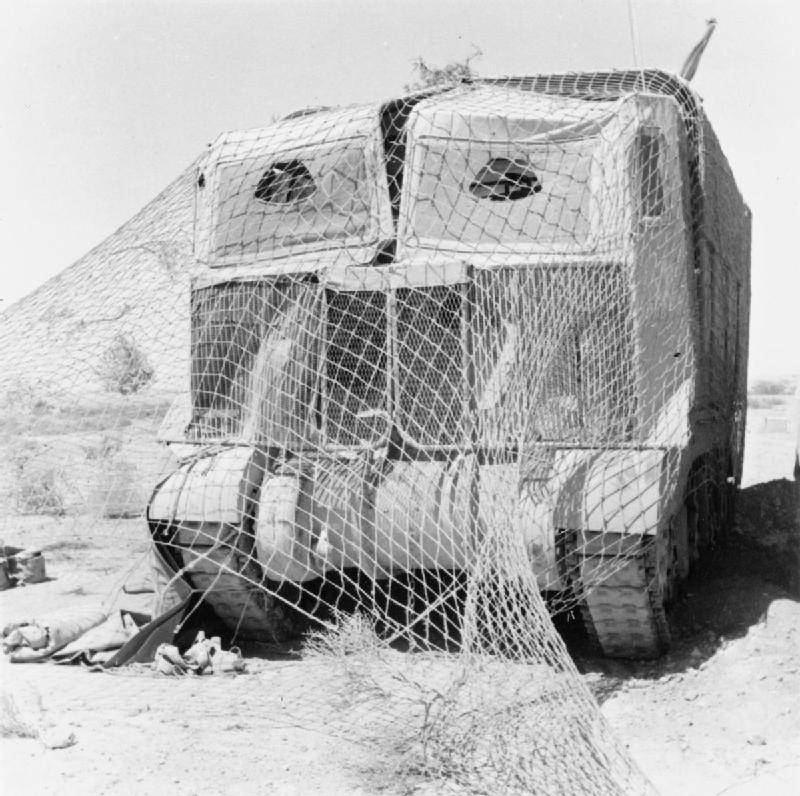
М3 disguised as a tracked conveyor.
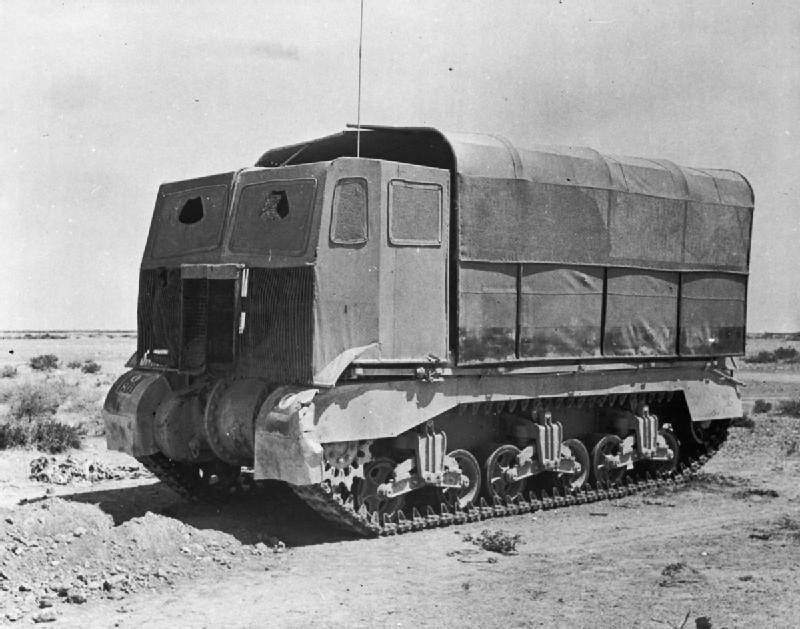
Used such machines in North Africa.
Tanks of all modifications had rubber-metal tracks, and three wheeled carts on each side. Above, on the frame of the trolley there was a roller supporting the caterpillar. The undercarriage was thus completely taken from the M2 tank and later used on the early M4. The track rollers could have solid discs as well as spoke discs. The suspension was reliable and did not occupy the internal volumes of the tank. Driving wheels were in front, guide rollers - in the back.
The tracks consisted of 158 tracks, 421 mm wide and 152 long mm each. On tanks MZA4 - there were 166 of them, because of the longer hull. The track device was different from the tracks of the same T-34. Each truck was a rubber plate with a metal frame inside, and two metal tubular axles passing through it. They were put on connecting brackets with a profiled canine, connecting the tracks into a caterpillar. On each track there were two canines that skirted the rollers of the support carts. Well, and the leading asterisk with its teeth caught on the connecting brackets of the caterpillar. The very surface of the rubber track plate was smooth. But on the last tanks there were plates with chevron projections, and later they also put the General Sherman МNNXX tanks on their tracks.
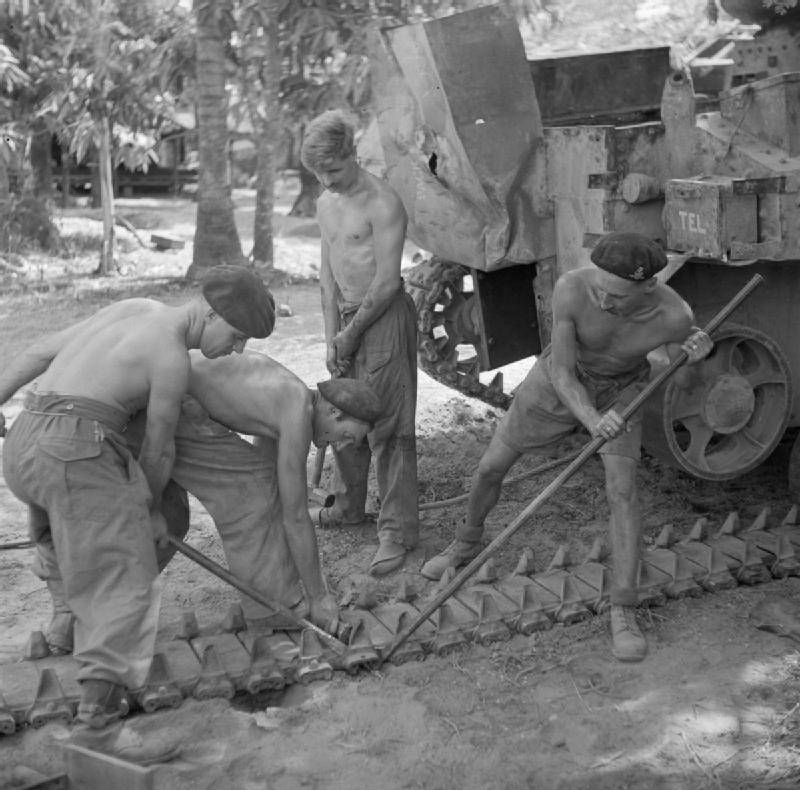
"The life of a British tanker is heavy and unsightly." Replacing tracks
The M3 tank for its time was ... the most heavily armed medium tank in the world. Its main firepower was the 75-mm cannon, which designed the Westerfälf arsenal based on the famous 1897 French field gun of the 75-mm caliber, which was also used by the US Army. The tank gun, which received the M2 index, had a barrel in 3 m long, equipped with a aiming stabilizer, a semi-automatic shutter and a barrel purging system, which reduced the gas concentration of the fighting compartment. Moreover, the stabilization system on the M3 tank was used for the first time in the world, and only then it served as a model for all similar systems on tanks in many armies of the world. Vertical guidance angles were of the order of 14 degrees, and along the horizon of the plane, the gun could be aimed at 15 degrees in both directions. For aiming guns vertically used as an electro-hydraulic system, so the manual drive. The ammunition was in the sponsor itself and also on the tank floor.
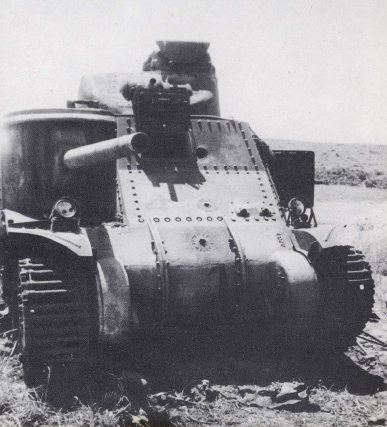
M3 padded in North Africa. The tank hit three projectiles of different caliber and only after that he lost his combat capability.
However, this gun has problems. It turned out that its barrel goes far beyond the dimensions of the body. It really alarmed the American military, who for some reason was very afraid that a tank with such a long gun would rest on something or catch it when it moved. Therefore, they demanded to shorten the barrel to 2,33 m, which significantly reduced all the combat characteristics of the gun. The “truncated” gun received the M3 index, and this was a heart oil for the military, but it turned out that the stabilization system with a short barrel “failed”, it was not created for it. Then they decided to wear a counterweight on the barrel, which looked like a… muzzle brake. By the way, very similar story came out with our Soviet tank T-34. It was the requirement of the then military, that the designers had to cut off the barrel of the ФХNUMX gun on the 34 mm, which reduced its power by as much as 762%. But now she did not speak for the dimensions of the tank! It is very likely that conservatism is characteristic of the military; neither national affiliation, nor social order influence it.
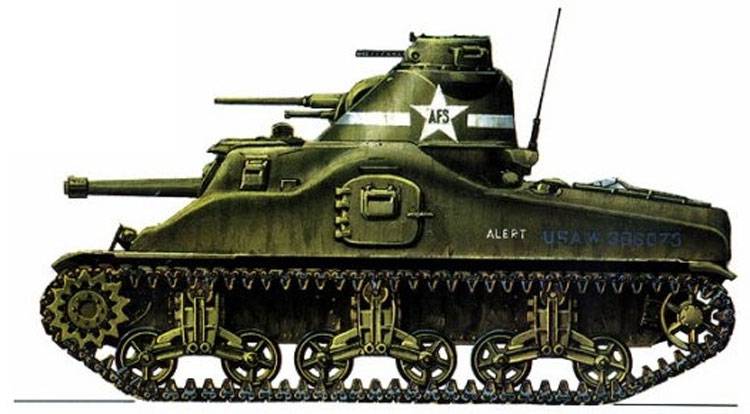
М3 with a molded case and in the "American coloring".
37-mm cannon was created in the same arsenal in 1938 year. On the tanks M3 put her modification M5 or M6. The corners of its vertical alignment made it possible to shoot, even theoretically, at low-flying aircraft. A machine gun mated with a gun, another was in the upper turret, while the turret had a rotating polik with walls emitting it from the fighting compartment. The ammunition of this gun was located in the tower and at the bottom of the rotating polik.
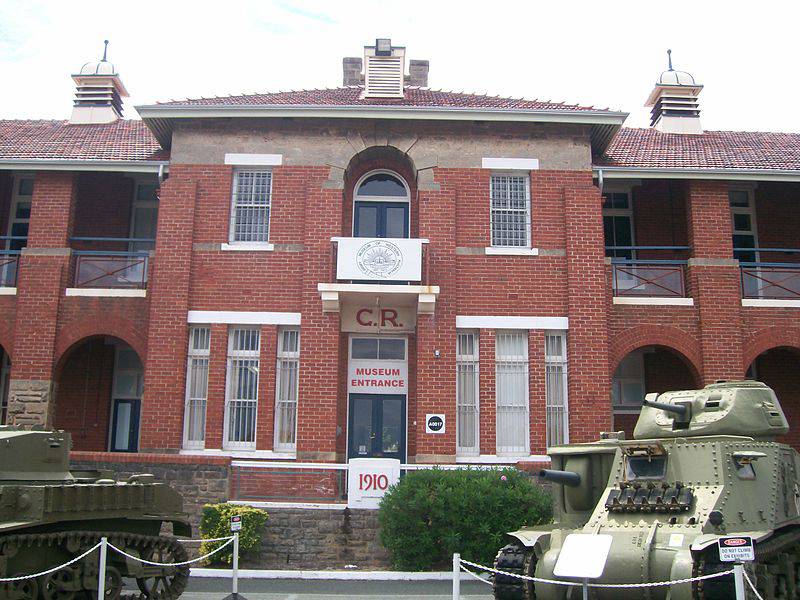
Fremantle Western Australia. The Museum of War and the entrance is well-preserved and well-kept M3.
At a distance of 500 yards, that is, 457 m, the projectile of this gun could penetrate armor up to 48 mm thick, and 75-mm cannon - 60 mm armor, which has a slope of 30 degrees to the vertical.
Naturally, both guns had periscope optical sights. The 75-mm gun had a sight on the roof of the gun sponson. With it, you could shoot direct fire at 1000 yards (300 m).
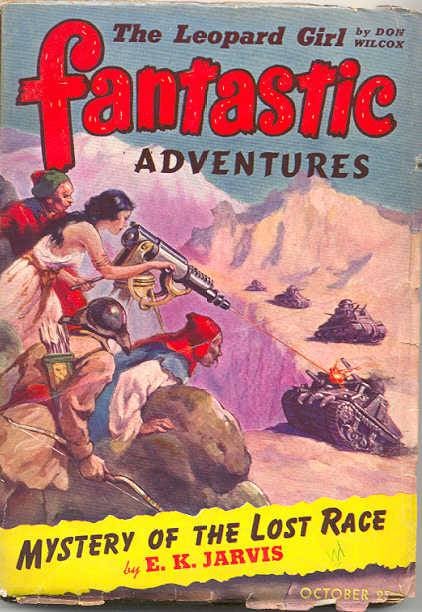
I did not have time to get the M3 into service with the army, as he immediately appeared on the cover of the American magazine Fantastic Adventures! (No. 10 for 1942 a year) As you can see, the "leopard girl" burns these tanks with a laser beam!
As for the British, they did not like weapons located in three tiers. Therefore, on the "General Grant" machines, the upper turret was not installed, and on the "General Lee" tanks, which were used by the English army, it was also removed, replacing it with a hatch. Other weapons consisted of 11,43-mm “Tompson" submachine guns, pistols and grenades. Also, 4-inch (102 mm) grenade launchers were mounted on the turret of the British tanks to shoot smoke grenades.
Tanks M3, released in the United States, were usually painted with green paint of different shades - from dark green to khaki. On board where the engine was located on both sides was given a registration number, which was assigned to the tank by the Armaments Department. The name "USA" and the letter "W" were written in blue - indicating that the tank had already been transferred to the army, and the six-digit number was either yellow or white. A white star in a blue circle was applied on the tower and on the frontal armor of the hull as a means of identification, which in addition was superimposed on the white stripe. It was in this coloring that the M3 tanks were supplied by Lend-Lease Americans.
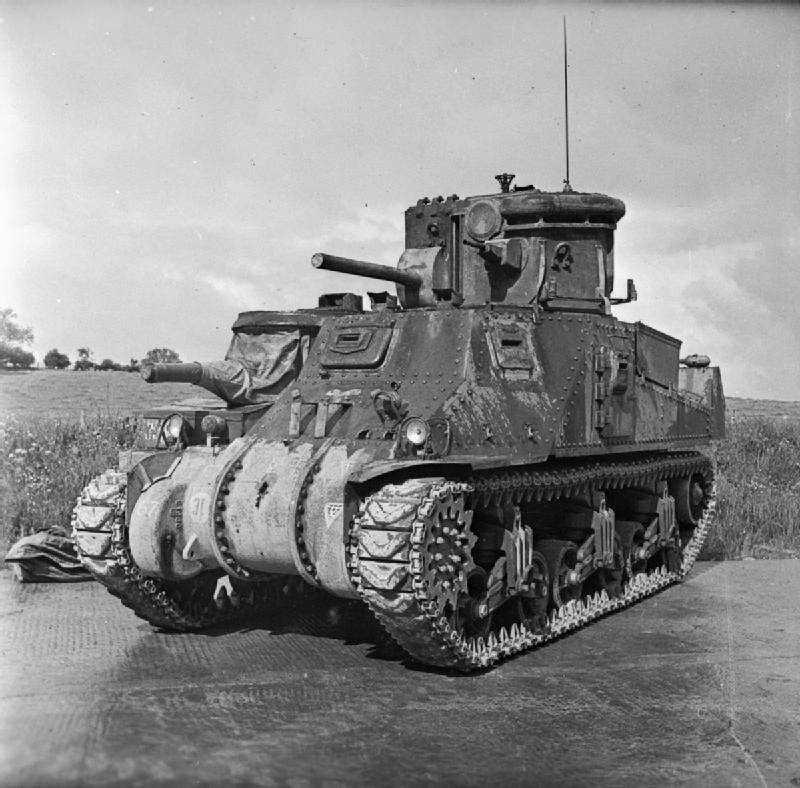
No less fantastic М3 СDL - “Channel defense tank”. Also a kind of "laser weapon".
American tanks had white tactical numbers on both the turret and the hull: the order number of the vehicle in the tank company, then the letter designation of the company itself. For example, 9E or 4B. Next to the door on the sponsorship, geometric figures were drawn, also indicating the numbers of the company, battalion and regiment as part of the division. The identification mark of the division was placed on the middle armor of the transmission. On those tanks that fought in North Africa, on a frontal armor plate instead of a white star, a star-striped flag of the USA was painted.
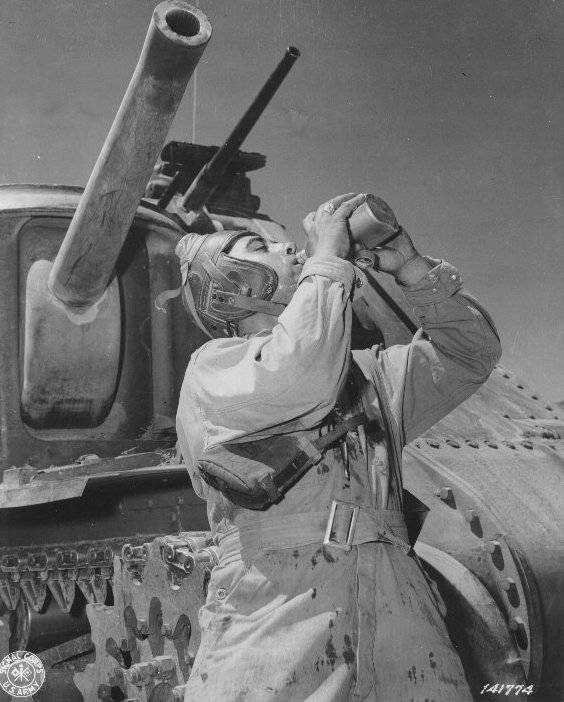
The movie "Sahara" (1943): "heat"!
Tanks M3, sent to England had a dark olive color, as it was supposed by American standards. But the British themselves repainted them in traditional British camouflage from stripes of yellow, green and brown, with a black border. The first tanks that got into North Africa almost immediately went into battle, so they simply did not have time to repaint them. But if there was time, they were painted in sand color.
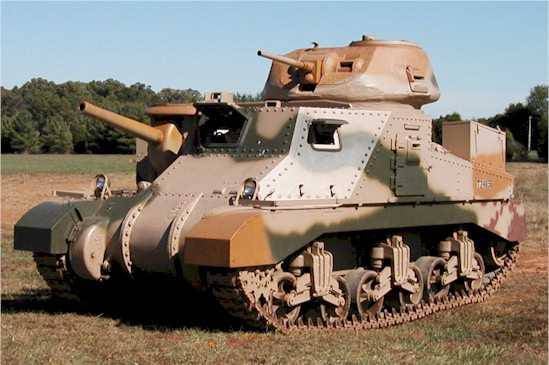
Another option camouflage coloring M3.
The registration number was kept, but the letter "W" was replaced with the letter "T". The number was restored with white paint. In specific field conditions it could not be painted over, but simply protected with a stencil, which made it look like an olive-colored frame. Most of the British tanks M3 who fought in Burma had a green color and large white stars on the hull and on the tower. The registration numbers were kept on them, and some also had individual numbers on the frontal armor.
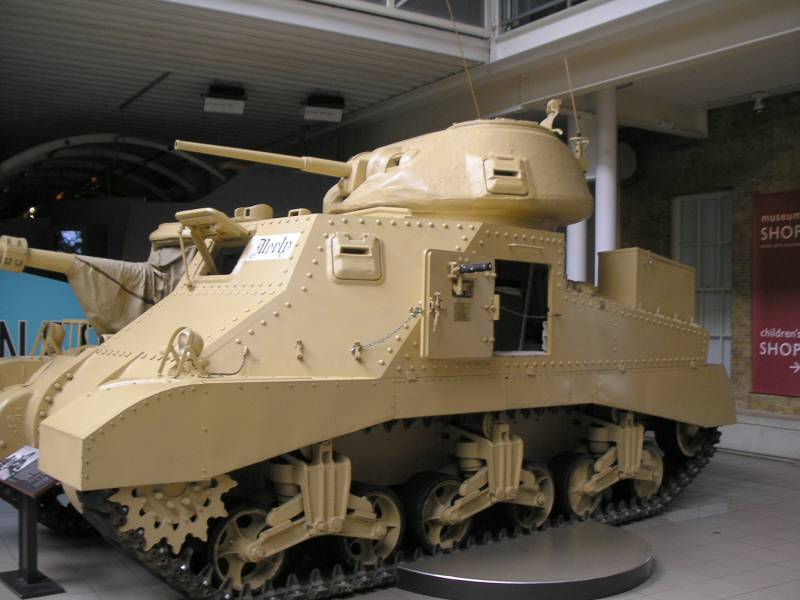
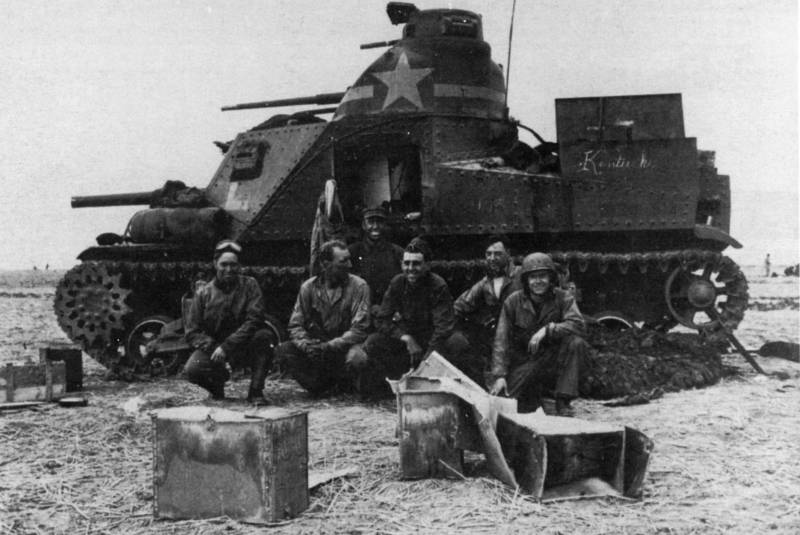
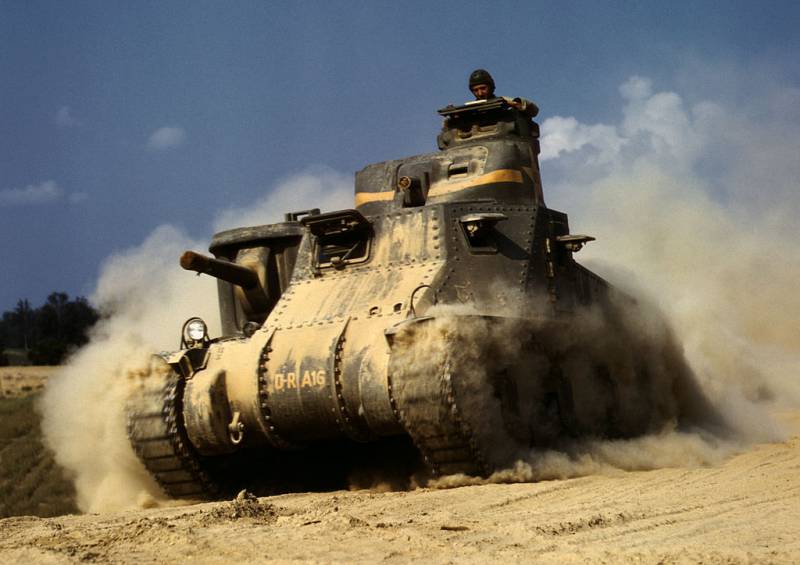
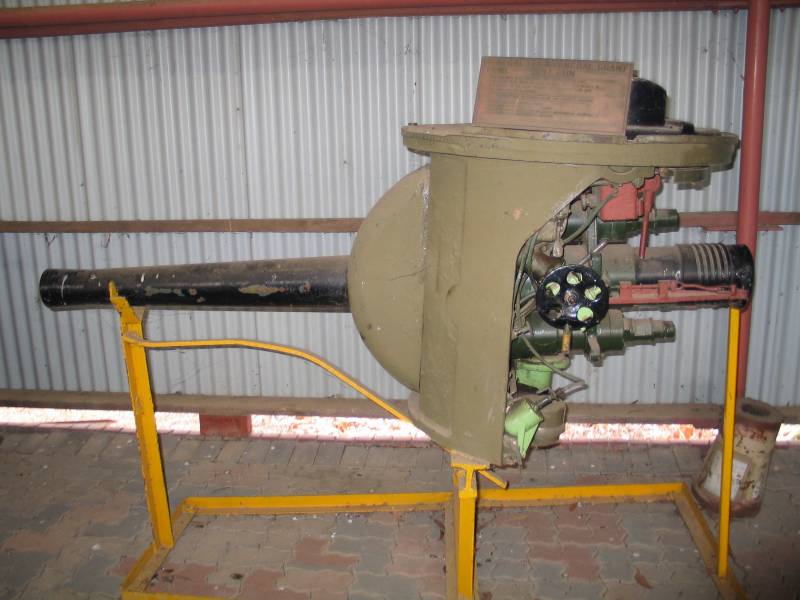
Information